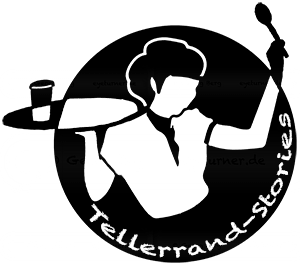Bremen, the Hanseatic city on the Weser, stands for civic autonomy and freedom, embodied by the UNESCO World Heritage ensemble of the town hall and Roland statue. In culinary terms, the city is best known for its drinks: beer, wine and coffee have made history here. But good seafaring cuisine and fresh fish are also on many menus. North German cuisine between Schlachte and the Schnoor quarter.

Strolling along the Schlachte
The Schlachte, Bremen’s maritime mile on the Weser, attracts visitors with its cafés, restaurants and bars in former warehouses. Excursion steamers, restaurant ships and ship hostels are moored along the quay wall. In December, the Schlachte is transformed into the maritime Christmas market Schlachte-Zauber. A legend among the ships is the Alexander-von-Humboldt. Since 2016, the barque has served as a hotel and catering ship. Guests spend the night in stylish cabins or come on board for a portion of Labskaus. Once a reserve lightship and sailing training ship, the ship with green sails shone in the Beck’s commercial for Joe Cocker’s wanderlust song “Sail Away”. Since her christening in 1906, the Alexander-von-Humboldt has sailed over 500,000 nautical miles, crossed the Atlantic twelve times and circumnavigated Cape Horn twice.

In addition to pasta monotony and boring salmon dishes, the menu at the Alex also includes Hanseatic specialties: sailor’s bread or Labskaus with Knipp as a portion combined on the Bremen tasting plate. Incidentally, Labskaus tastes better than it looks and Bremer Knipp, a crispy fried sausage made from more oats than pork, could even win over flexitarians. Last order is at 11 pm because of the cabin guests. Then ask for the Blue Lagoon: the former captain’s chamber in the style of the old tall ship era is available to guests for a nightcap. Reservations are recommended.

Gasthof Zum Kaiser Friedrich
Zum Kaiser Friedrich is one of the last pubs in Bremen whose interior has remained virtually unchanged for decades – a real old-school pub. Regulars of all kinds have been gathering here since 1889. Former senators, mayors, skat players and Bremen showmen regularly stop by. Although the name commemorates the emperor who died in 1888, the restaurant offers first-class seafaring cuisine: pilot plates, cutter plaice and homemade Labskaus. The drinks menu lacks some local color, as the draught beer comes from Hamburg. The gable front shows Emperor Frederick III, the 99-day emperor, on horseback.

Fish in the hand!
A lot to do in Bremen and little time for restaurants? The city’s specialist fish stores are perfect for a quick fish meal. In the Schnoor district, once home to craftsmen and fishermen, the small houses are close together. The name Schnoor originates from the Taumachers who worked here. At Dat Fischhuus in Schnoor, you can get fresh fish sandwiches to take away. The traditional F.L. Bode’s store near Bremen’s town hall has been in business for almost 160 years. Here, the staff prepare the fish fresh in front of the customers. F.L. Bodes was the first specialist store in Germany to be certified according to the standards of the Marine Stewardship Council (MSC). The bistro serves changing daily specials at lunchtime and always has fish soup!

Bremer Ratskeller
In Bremen’s Ratskeller, even the Bremen Town Musicians enjoy kale with Kassler and Labskaus with rollmops – and seem satisfied. But more than Hanseatic cuisine, much here revolves around wine. The best German wines have been stored in the vaults of the Ratskeller for over 600 years. The extensive labyrinth is nicknamed the “delicious foundation”. Together with the town hall above it and the Roland statue on the market square, the cellar has been a UNESCO World Heritage Site since 2004.

A tip for the perfect end to the day: first Keller Kieken – that’s the name of the one-hour guided tour through the largest collection of German wines. Then dine in the Ratskeller restaurant. There you can admire the old Deputats barrels. These barrels were once used to pay Bremen’s senators and councillors with an annual allowance of wine – a payment in kind. A wine shop has been part of the town hall since it was built in 1405, and this has not changed to this day. The council members received a generous three liters of wine per day. In the evening, they were even allowed to sell their allowance – giving rise to the saying: “Always stay hydrated”.

Coffee drinking in Bremen
Although the coffee trade in Bremen is younger than the wine trade, Bremen was also a pioneer here. This underlines the important role of the Free Hanseatic City of Bremen in history. Germany’s first coffee house opened in Bremen in 1673. The exotic drink was served in the Schütting, the merchants’ guild house on the market square. The place quickly became a meeting place. To this day, Bremen residents say “kaffeesieren” when they meet for a coffee. There are many stories surrounding the bean that have earned Bremen the name “coffee city”. Find out more in a coffee story that is anything but boring, even if it is about Kaffee HAG, the first decaffeinated coffee.

In Bremen you can eat excellent seafood. Bremen is also known as the coffee city and has the Paula Modersohn-Becker Museum, the world’s first museum dedicated to a female painter. In Whale watching, we explain why a life-size painting of a whale hangs in the Old Town Hall. Bremen also has a culture of remembrance: since 2023, the Arisierungs-Mahnmal on the Weser Promenade has commemorated the systematic dispossession of the Jewish population during the Nazi era and a guided tour of the city with special eye-catchers in mind.
The research was supported by Bremen Tourismus


